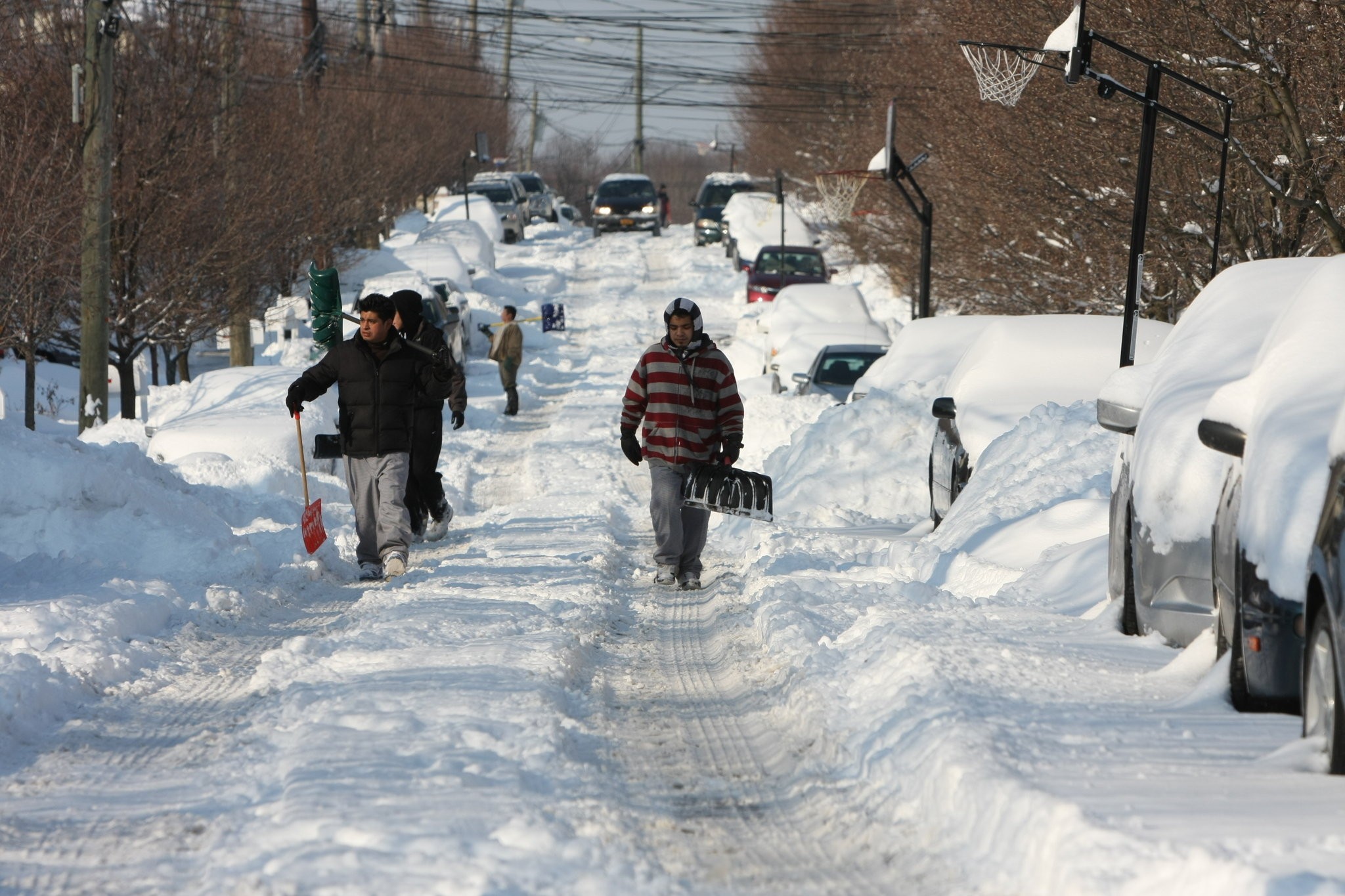News
Staten Island Weather Forecast Daily
Published
7 months agoon
By
admin
Welcome to Staten Island weather, where the weather is as diverse and dynamic as its vibrant community! Whether you’re a lifelong resident or planning a visit, understanding the local weather patterns can make all the difference in your day.
From sunny skies to sudden storms, Staten Island’s climate keeps us on our toes. In this blog post, we will delve into what influences the weather here, how forecasters predict it with accuracy, and provide some helpful tips for navigating through different types of conditions.
So grab your umbrella or sunglasses (or both!), because we’re about to explore the ever-changing world of Staten Island Weather!
What Influences the Staten Island Weather?
Staten Island, located in New York City, experiences a diverse range of weather patterns throughout the year. The island’s unique geographical location and surrounding bodies of water play a significant role in influencing its weather conditions.
One key factor that influences Staten Island’s weather is its proximity to the Atlantic Ocean. The ocean acts as a source of moisture and can impact the temperature and humidity levels on the island. During summer months, sea breezes can bring relief from hot temperatures, while during winter, they may contribute to colder conditions.
Another important influence on Staten Island’s weather is its position within the larger metropolitan area. The presence of tall buildings and concrete surfaces can create what is known as an “urban heat island effect.” This phenomenon occurs when urban areas absorb and retain more heat than surrounding rural areas, leading to higher temperatures in cities like Staten Island.
Seasonal variations greatly impact Staten Island’s climate. Summers tend to be warm and humid with occasional thunderstorms due to increased moisture levels. Winters are typically cold with periodic snowfall influenced by Arctic air masses moving southward across the region.
Understanding Weather Forecasting Methods
Weather forecasting is a complex science that involves analyzing various meteorological data to predict the future weather conditions accurately. Meteorologists use several methods and tools to make these predictions, providing us with valuable information about what we can expect in terms of temperature, precipitation, and other atmospheric conditions.
One of the primary methods used in weather forecasting is numerical weather prediction (NWP). This technique involves using mathematical models to simulate the behavior of the atmosphere based on current observations.
By inputting data such as temperature, humidity, wind speed, and pressure into these models, meteorologists can generate forecasts for specific locations.
Satellite imagery also plays a crucial role in understanding weather patterns. Satellites provide continuous monitoring of Earth’s atmosphere from space, capturing images that help identify cloud cover, storm systems, and other atmospheric features. These images are essential for tracking storms and predicting their movement.
Radar technology is another vital tool in weather forecasting. Doppler radar allows meteorologists to detect precipitation intensity and movement by measuring changes in frequency caused by moving raindrops or snowflakes.
This information helps forecasters determine where severe weather events like thunderstorms or hurricanes may occur.
While modern forecasting techniques have significantly improved accuracy over time, it’s important to note that no forecast can be 100% accurate all the time.
Weather is inherently unpredictable due to its chaotic nature; small errors in initial measurements or model inputs can lead to significant variations in predicted outcomes.
Nonetheless, advancements in technology and scientific understanding continue to enhance our ability to forecast the weather accurately.
Today’s forecasts are more reliable than ever before but remember – always stay updated with reputable sources for the most accurate and up-to-date information about Staten Island’s weather conditions.
The Best Sources for Accurate Staten Island Weather Forecasts
When it comes to staying prepared for the ever-changing weather in Staten Island, having access to accurate forecasts is crucial. But with so many sources available, how do you know which ones can be relied upon? Here are some of the best sources for accurate Staten Island weather forecasts.
1. National Weather Service: The National Weather Service (NWS) provides detailed and reliable forecasts specifically tailored to different regions, including Staten Island. Their website offers up-to-date information on current conditions, hourly and extended forecasts, as well as severe weather alerts.
2. Local News Stations: Local news stations often have meteorologists who specialize in forecasting local weather patterns. Tuning into your favorite station or checking their websites can give you valuable insights into what to expect throughout the day.
3. Mobile Weather Apps: There are numerous mobile apps available that provide real-time updates on weather conditions and forecasts for specific locations like Staten Island. Popular options include AccuWeather, The Weather Channel, and Dark Sky.
4. Online Weather Websites: Websites dedicated solely to providing detailed weather information also come in handy when looking for accurate predictions for Staten Island’s weather forecast daily. Examples include Weather.com and Weather Underground.
Remember that no forecast is 100% accurate all the time due to the unpredictability of nature’s elements! However, relying on these trusted sources will increase your chances of being well-prepared for whatever Mother Nature throws your way in beautiful Staten Island!
Daily Weather Patterns and Changes to Look Out For
Staten Island’s weather can be quite unpredictable, with daily patterns and changes that keep residents on their toes. One day you may wake up to clear blue skies and sunshine, while the next brings heavy rain showers or even snowfall. It’s important to stay informed about these daily weather variations in order to plan your activities accordingly.
During the spring months, Staten Island experiences a mix of mild temperatures, occasional rain showers, and blossoming flowers. This is a great time for outdoor activities such as hiking or picnicking in one of the island’s many parks.
Summer brings warmer temperatures and higher humidity levels. Be prepared for afternoon thunderstorms that can pop up out of nowhere! Don’t forget your umbrella if you’re heading out for an evening stroll along the waterfront.
As fall approaches, Staten Island showcases its beautiful autumn colors. Crisp mornings give way to pleasant afternoons, but be aware of sudden changes in temperature as fronts move through the area.
Winter on Staten Island can vary greatly from year to year. Some winters bring heavy snowfalls while others are milder with more rain than snow. Keep an eye on weather forecasts during this time so you know when it’s best to bundle up or grab your rain gear before heading outside.
Being prepared for these daily weather patterns and changes will ensure that you can enjoy all that Staten Island has to offer throughout the year. So whether it’s packing sunscreen during hot summer days or layering up during chilly winter mornings, always check the forecast before stepping out into Mother Nature’s playground!
Tips for Preparing for Different Types of Staten Island Weather
Staten Island is known for its diverse weather patterns, which can range from hot and humid summers to snowy winters.
As residents of this beautiful island, it’s important to be prepared for whatever Mother Nature throws our way. Here are some tips for preparing for different types of Staten Island weather:
1. Hot and Humid Summers:
– Stay hydrated by drinking plenty of water throughout the day.
– Dress in lightweight, breathable clothing that allows air circulation.
– Use sunscreen to protect your skin from harmful UV rays.
– Seek shade or stay indoors during the hottest parts of the day.
2. Cold and Snowy Winters:
– Layer up with warm clothing, including a hat, gloves, scarf, and thermal socks.
– Make sure your home is properly insulated to keep out drafts and conserve heat.
– Clear snow from walkways promptly to prevent slips and falls.
– Keep an emergency kit in your car with blankets, snacks, water, and a flashlight.
3. Rainy Days:
– Carry an umbrella or raincoat with you when heading outdoors.
– Wear waterproof shoes or boots to keep your feet dry.
– Check gutters and drainage systems around your property to prevent flooding.
– Plan indoor activities like board games or movie nights on rainy days.
4. Windy Conditions:
-Watch out for loose objects that could become projectiles in strong winds.
-Secure outdoor furniture or bring it inside if possible
-Avoid walking near trees or power lines that could potentially fall during high winds
-Park vehicles away from large trees as they may be prone to falling branches
By following these simple tips and being aware of the specific challenges each type of weather brings, you can better prepare yourself for any kind of Staten Island weather condition. Stay safe!
Read more: Choice Home Warranty George Foreman Guide

You may like

In the Spotlight: Sabu Howard’s Biography, and Net Worth

The Rise of Uber Trujillo: Griselda Blanco’s Legacy Lives On

Yasin Cengiz: Choreographing Stardom in the TikTok Spotlight

The Secrets of Dallas Yocum Unveiled

The Journey of Liam Costner: A Rising Star

Albert Ezerzer: What Really Happened Behind the Scenes?

Snake Oil Provisions | Remedy for the Mundane

Vintage Americana : RRL Jackets, Shirts, Clothing & Accessories

Intricate Links Unraveling NYT Connections Puzzle

Imgsed Imginn : Browse Instagram Incognito – The New Era of Social Media Privacy

How to Style Different Types of Shoes for Every Occasion

Personalized Concierge Medical Care in Santa Rosa

Difference Between Server vs. Cloud: Pick the Right Solution

VAIDYAGRAMA WELLNESS HOSPITAL

AUTO BODY REPAIR

Crafting Memories in Wood: The Timeless Allure of Wooden Caskets

7 Must-Know Insights on Quince Clothing for Your Special Day

Exploring the Craftsmanship of Treehouse Brewery A Haven for Beer Enthusiasts

The Ultimate Guide to Guns International

7 Must-Know Tips for Mastering Craigslist Palm Springs

In the Spotlight: Sabu Howard’s Biography, and Net Worth

The Rise of Uber Trujillo: Griselda Blanco’s Legacy Lives On

Yasin Cengiz: Choreographing Stardom in the TikTok Spotlight

The Secrets of Dallas Yocum Unveiled

The Journey of Liam Costner: A Rising Star

Albert Ezerzer: What Really Happened Behind the Scenes?

Snake Oil Provisions | Remedy for the Mundane

Vintage Americana : RRL Jackets, Shirts, Clothing & Accessories

Intricate Links Unraveling NYT Connections Puzzle





